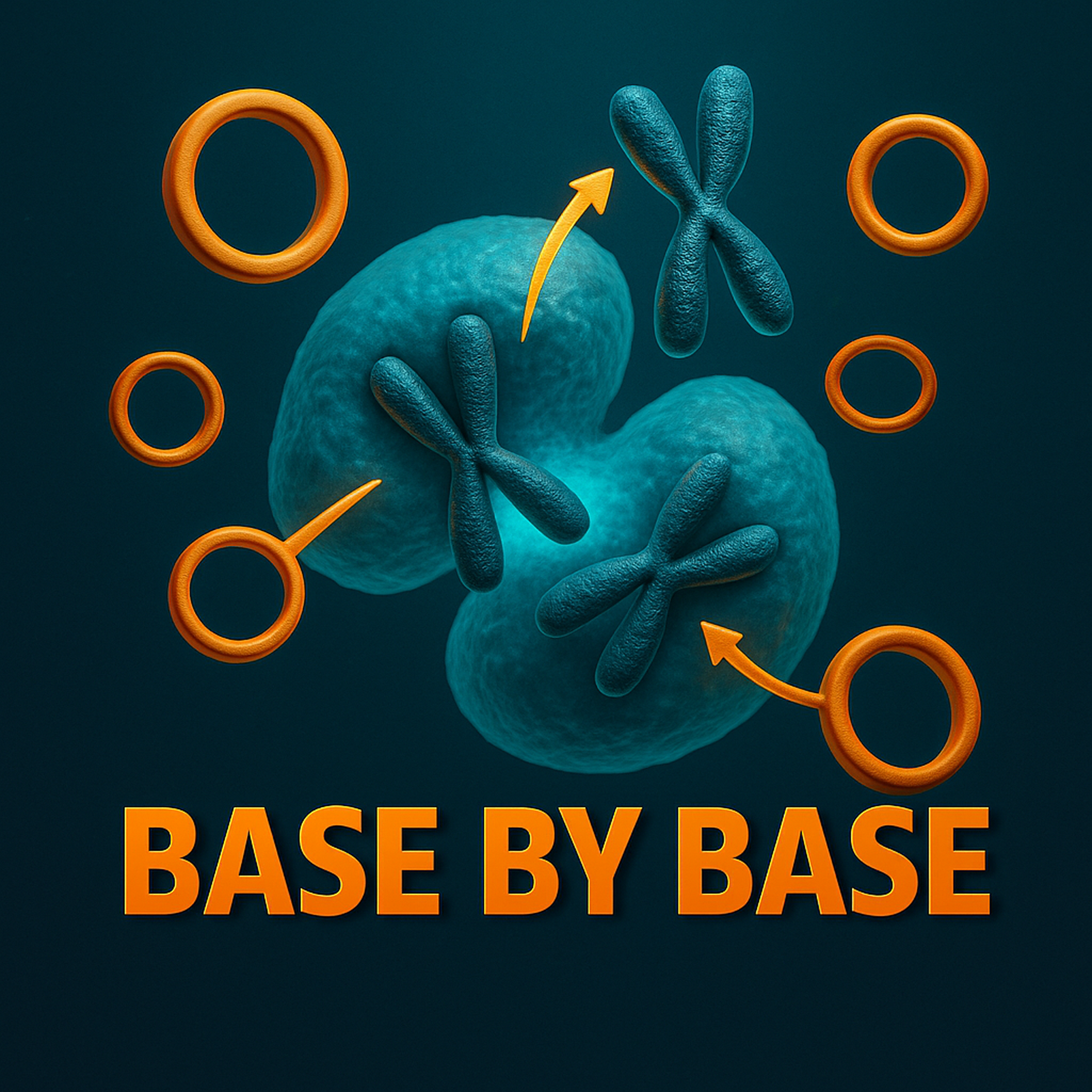Show Notes
️ Episode 45: Probing Nucleolar Mechanics — RNA-Dependent Viscoelasticity of Nucleolar Subcompartments
In this episode of Base por Base, we delve into a groundbreaking study by Cheng et al. (2025) in PNAS that employs micropipette aspiration to directly measure the material properties of nucleoli within living Xenopus laevis oocytes. By aspirating these large, transcriptionally active condensates, the authors distinguish the Newtonian, liquid-like behavior of the granular component (GC) from the partially solid-like, viscoelastic nature of the dense fibrillar component (DFC) and its fibrillar center (FC). Crucially, they demonstrate that targeted RNA degradation fluidizes the DFC, revealing an intimate link between nascent ribosomal RNA and nucleolar rheology .
Main highlights:
The study adapts micropipette aspiration—a label-free technique traditionally used for cells—to probe intracellular biomolecular condensates, achieving one-dimensional strain measurements under controlled suction pressure; aspiration profiles show the GC deforms with a constant strain rate, characteristic of a Newtonian fluid, whereas the DFC/FC exhibits a nonlinear, time-dependent response consistent with a viscoelastic solid; quantitative fitting yields an average GC viscosity of ~220 Pa·s and a DFC elastic modulus of ~3 Pa, with interfacial tensions estimated at 1.7 µN/m (GC–nucleoplasm) and ≤0.5 µN/m (DFC–GC); RNase A treatment dramatically accelerates DFC fusion and aspiration, producing an inverse capillary velocity two orders of magnitude lower and indicating a tenfold increase in the GC–DFC interfacial tension alongside a fluidization of the DFC phase.
Conclusion:
By linking RNA content to nucleolar material state, this work unveils how spatially organized rRNA processing underpins the viscoelastic architecture of the nucleolus. Such insights not only deepen our understanding of ribosome biogenesis dynamics but also pave the way for exploring how condensate mechanics influence cellular function and dysfunction in development and disease.
Reference:
Cheng, H. H., Roggeveen, J. V., Wang, H., Stone, H. A., Shi, Z., & Brangwynne, C. P. (2025). Micropipette aspiration reveals differential RNA-dependent viscoelasticity of nucleolar subcompartments. Proceedings of the National Academy of Sciences, 122(22), e2407423122. https://doi.org/10.1073/pnas.2407423122
License:
This episode is based on an open-access article distributed under the Creative Commons Attribution 4.0 International License (CC BY 4.0) – https://creativecommons.org/licenses/by/4.0/




